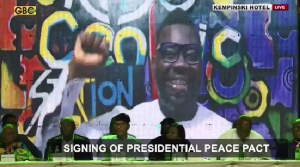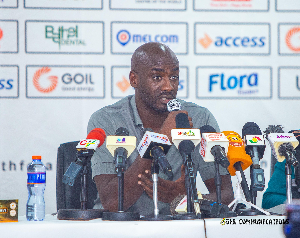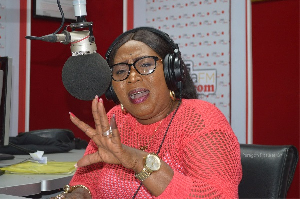Players in the renewable energy sector are stepping up the promotion of energy conservation, efficiency and knowledge transfer as the country continuous to find alternatives to the raging energy crisis.
Consequently, the Institute of Industrial Research (IIR) of the Council for Scientific and Industrial Research (CSIR) has so far trained a total of 1,742 electricians in Solar Photovoltaic (Solar PV) Design, Sizing, Installation and Maintenance.
The beneficiaries are certified electricians who are members of the Certified Electrical Wiring Professionals (CEWPAG) and drawn from all regions of the country.
Solar PV is a technology that converts sunlight (solar radiation) into direct current electricity by using semiconductors. When the sun hits the semiconductor within the PV cell, electrons are freed and form an electric current. Solar PV technology is generally employed on a panel (hence solar panels).
The country has for decades relied solely on hydropower, generated by three dams, of which the Akosombo Dam is the largest. The Akosombo Dam was originally built in the 1920s to serve the British. It was revamped in the 1950s by Dr. Kwame Nkrumah, Ghana’s first president, to serve the newly independent nation. Since then, two more dams have been built to meet Ghana’s growing energy needs. Ghana exports electricity to the neighbouring countries of Benin, Togo, Cote d’Ivoire and Burkina Faso. Despite generating enough electricity to afford exporting to other countries, Ghana is in an energy crisis, with unpredictable power supply to industries and homes. “Dumsor” refers to the problem of frequent power outages in Ghana.
The country has had periods of load shedding exercises in the past; in 1983, 1998, 2006/7, and as recently as few days ago. In the last few years however, the situation has become dire. Electricity demand has seen an increase of about 52% over the course of the last decade (from 2006 to 2016). The installed generation capacity has almost doubled within the same period. Despite this, Dumsor still occurs on an almost daily basis. The situation can be ascribed to the fact that due to fuel supply challenges, the installed generation facilities are unable to function as they are intended to.
In recent years, due to a drought that has lowered the water levels in the Volta River (which feeds the lake), and subsequently, the Volta Lake, the dam has seen a consistent drop in water levels below the acceptable operational levels. Thus, the Akosombo dam, and the two other dams, Kpong and Bui, have been operating at diminished capacities of 900, 140 and 342 MW instead of at their operating installed capacity of 1020, 160 and 400 MW, respectively.
Energy experts have in recent years advocated a departure from the over-reliance on electric energy to the usage of renewable energy sources such as Solar PV.
To increase the rate of penetration of Solar PV usage, CEWPAG begun a 6-months project to train their members to reposition them for an impending Solar PV usage boom.
Partners on the project include the Energy Commission, the Electricity Company of Ghana, Telsol KA Ltd with the IIR of CSIR providing the technical training with funding from the Skills Development Fund (SDF) and the Danish government through DANIDA.
Speaking at a closing ceremony of a 5-day Training -of-Trainers Workshop in Accra, the Training Co-ordinator of the project, Mr. Eric Nyarko said the trainees were taken through overview of the energy situation in Ghana, solar energy systems (PV and Thermal), charge controllers, invertors, batteries, health and safety and marketing.
He said that with an average of four-hour sunshine, conscious effort ought to be made to increase the utilisation of solar energy.
“Solar is no longer expensive. These days, the cost of the panels has reduced drastically and with the number of people trained, the country now has adequate expertise to aid the penetration of solar PV as an alternative energy source”, he added.
The National President of CEWPAG, Mr. Wisdom Gakpo said the trainings are in preparation for an anticipated upsurge in solar use, saying the over 1,500 professional installers are ready and well-equipped to address all solar PV related concerns.
A participant from the Upper West Region, Mutawakilu Mogtari appealed for a government subsidy for the importation of Solar components to make it more affordable for potential users to increase its usage.
He added a high solar penetration will substantially lift the burden off traditional energy sources that have proven to be inefficient, unreliable and exhaustive and further conserve the environment.
Business News of Monday, 8 April 2019
Source: 3news.com

















